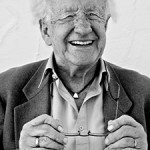Stalin the Communist and Mao the Commune-ist
By Johan Galtung
Churchill and Hitler made history but did not change it; after the war their societies found their old forms. Stalin and Mao changed their much bigger societies basically, and gave the Westphalian state system new fault-lines, alliances: anti-Russia-USSR, anti-China-DPRC.
There was also a short lasting USSR-DPRC alliance 1949-53, when Stalin was alive. But when he was murdered the banner as leader of the rapidly expanding Communist World was not passed on to the biggest country, but stayed in Moscow. The new leader was not Mao Zedong but the colorless Malenkov. Surface level conflict; and important.
But the concept of a monolithic Communist as opposed to a Free world survived in a US mind slow at capturing or admitting deeper aspects of reality, but quick at projecting themselves on the world.
The deep differences between the Western civilization of which Russia was and is a part, and Chinese civilization of course also affected their communisms. So let us explore what happened to these two huge projects.
They were similar on three basic points: ending feudalism in the countryside; capitalism in the cities down; and imperialists – foreign forces – out. This is already a lot, and since the imperialism was mainly Western forces strongly linked to feudal-capitalist economic interests and systems – also culturally in both cases – strong political and military cleavages took shape; with the USA playing double roles.
They were also similar in rejecting world revolution, concerned with consolidating their own. Trotsky, Jewish, cosmopolitan, aimed at the world and was murdered by a more nationalist Stalin basking in the glory of “socialism in one country”. Something similar probably happened to Lin Biao at the hands of Mao; but for different reasons. Stalin may have preferred to be No. 1 and-or decided time is not ripe; Mao may have been uninterested in the external world of barbarians.
The differences were not in their Leninist analysis of the past, and what to do about it. The differences were and are in what next? Where are we heading?
The Western God–omnipotent, omniscient and omnipresent–found a secular abode in a USSR State with the same three characteristics. And a century later, now, in the USA Capital. The reincarnation of the Christian God in the former Soviet State lasted, say, 70 years; the reincarnation in US neoliberal Capital will be much shorter.
But the point here is that China has no such God. China is based on three civilizations pulling in different directions without pulling China apart. Confucian verticality will find its place inside Western inspired strong states and strong capital markets, as dictatorship and growth-based inequality. But Buddhism will pull in a horizontal and distribution-based direction and toward smaller units, like communes. So will Daoism, also seeing changes from one to the other to the next, and combinations of them, as natural, normal. As a result there is nothing surprising in a China combining all of the above, in changing proportions; except to people like economists unable to figure culture into their constructions of a homo economicus built into our genes.
Western History comes equipped with beginning and end and a lot in-between, the model being the Bible from Genesis to Revelations. There is a final state with something perfect about it, perfectly good or perfectly bad, and a final battle. Hence the Stalinist model, from Marx-Engels, of history ending in the perfect communist society after the final battle, the world revolution. Big, Final, Perfect–like the Savior finding His place in Heaven.
But the point here is that China has and sees no such history. There are endless successions of histories–in plural–of this and that dialectic, contradictions, in this and that holon; the Daoist message. Permanent revolution is like mothers’ milk for Chinese.
Mao’s anti-imperial/feudal/capitalist revolution built a strong state; after only nine years adding (People’s) commune characteristics. Then came the imitation of the strong Soviet industrializing state. Then the Cultural Revolution challenging what to them was the excessive Confucian verticality of both. And shortly after that the Deng revolution opening for ever bigger capital markets and inequality followed by the efforts to control inequality, corruption, and so on. Centuries of different Western histories as decades in one country.
I remember traveling on the Transsiberian railway Moscow-Beijing September 1988. As we came close to China loads of anti-Chinese propaganda were unloaded on the passengers, referring to the Chinese revolution as “bourgeois”. Officially the worst term possible; in response to the Chinese accusation of “revisionist”–state capitalism still being capitalism. They both had valid points against each other within a Marxist discourse–both leaderships were actually bourgeois-revisionist. But they both failed to see how different they were deeper down, enacting as they did their deep cultures.
To repeat the questions, what next? Where are they heading now?
Russia is confused. Putin is hated in the West because he rejects the pre-revolution past, and resists US-EU neo-imperialism in Georgia and Ukraine; but Russia cannot live on such negative messages. Gorbachev’s social democratic compromise with cooperatives is within the Western discourse, but carries no glory, nothing new. And it is against dualist Russian thinking: if socialism is bad, then capitalism must be good. The Chinese message is too complex, too eclectic, with no clear end in sight. China, however, will continue being China; not joining any Western camp, having the freedom to be its own self.
And Russia? Do not underestimate the column of Russian history: Orthodox spirituality, optimism in the long run. Easter Sunday is coming; God has arisen: with Gazprom–and Putin’s foreign policy.
First published at Transcend Media Service here.
